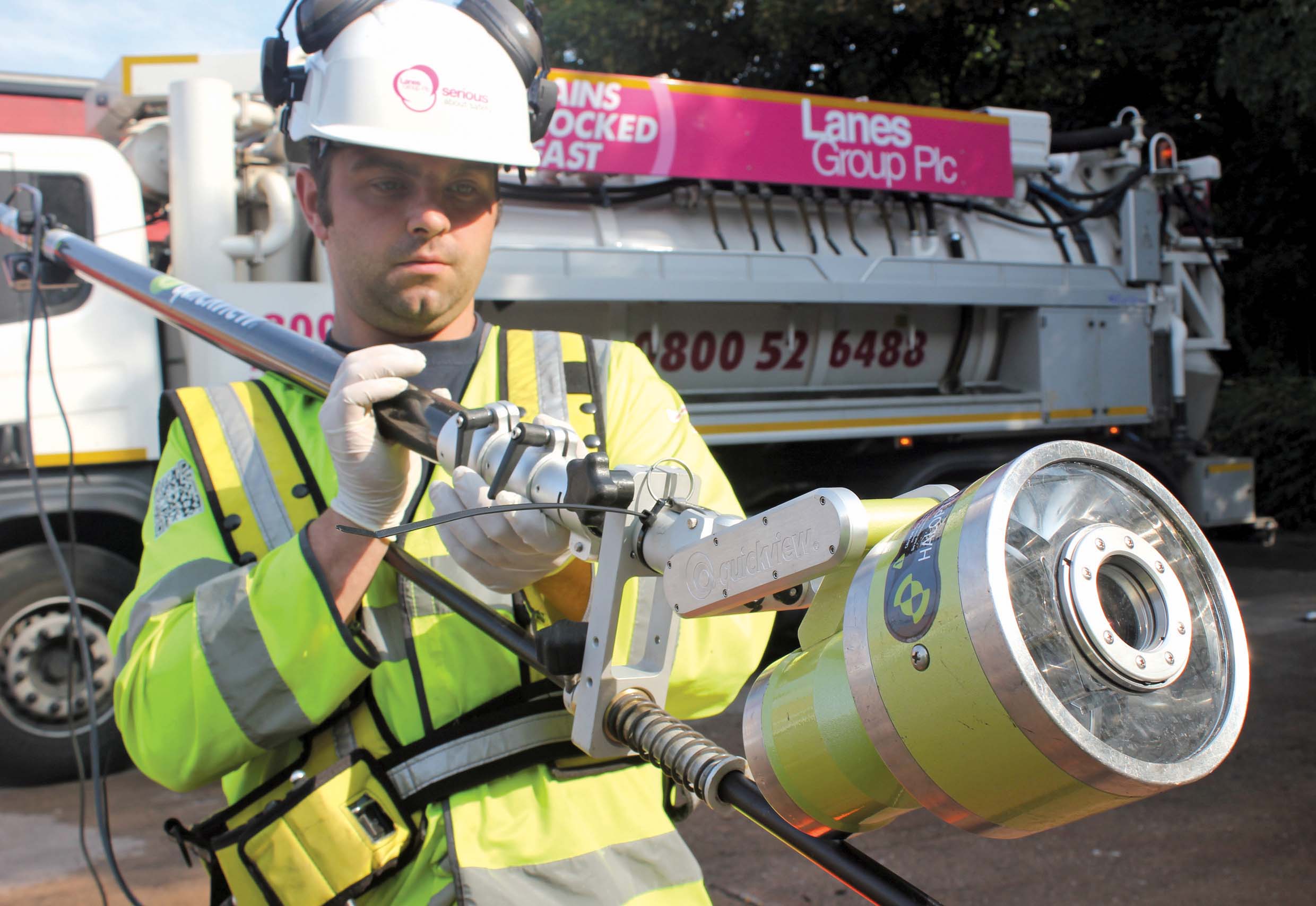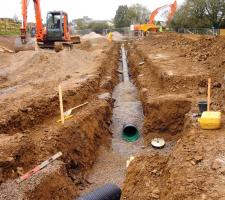
An array of new technologies will help optimise road drainage and minimise flooding risks - Mike Woof reports
In the UK the specialist contractor
Carrying out rapid and cost-effective inspections of surface water drainage assets along major roads is becoming more important as experts predict the UK’s weather patterns will become more volatile, increasing the risk of flash floods. The firm says that using the QuickView Zoom camera allows it to inspect up to three times as much pipework in one shift, compared with using conventional crawler cameras.
The fully-portable QuickView Zoom camera is mounted on a 7m carbon fibre telescopic pole and features a 36x optical plus 12x digital zoom, combined with a new Haloptic lighting system that automatically tracks the camera as the operator zooms it along the pipe. The camera offers an operating distance of over 100m as long as the pipe is straight, and can quickly focus on areas that need more detailed survey work with a conventional robotic camera.
The company claims that using a two-person team, it has been able to inspect up to 2km of pipe on the M6 toll in one night, compared with around 600m using conventional camera systems. Meanwhile the new package also allows video and still images to be recorded and downloaded from the fixed-view camera and used for compiling reports.
The M6 toll runs from the M6 Junction 3a east of Birmingham to Junction 11a to the north-west. It is the easiest and most reliable route through the Midlands, bypassing one of the UK's most congested sections of road, the M6 through Birmingham.
Meanwhile on another UK job the firm was able to employ no dig ultraviolet lining technology to rehabilitate drainage along a rural road that had repeatedly flooded, causing major problems for road users. The project demonstrated the benefits of the ultraviolet (UV) relining technique, which can be more easily deployed in areas where access is difficult and where there is tree cover.
Lancashire Council commissioned Lanes Group to reline the surface water drain along the tree-lined road in Clayton-le-Woods, south of Preston. The clay pipe, 220m long and 225mm in diameter, had been penetrated in many places by tree roots, trapping silt and debris, resulting in localised flooding during and after periods of heavy rain.
The firm explained that UV relining was the best option as several trees lie along the run of the pipe, making it impossible to use the standard trenchless cure in place pipeline (CIPP) technique, which requires a scaffold tower and a crane to invert the liner into the pipe. With UV relining, the tower and the crane are not needed because the liner is pulled through the pipe and then inflated with compressed air. An array of UV lights is then used to cure, or harden, the resin in the liner. The firm added that UV relining requires fewer support vehicles and less machinery, which also makes it better suited to being deployed along smaller rural roads, where access may be difficult and off-road space limited. The UV curing process also takes much less time than hot CIPP, so is well-suited to highway projects where road closures and traffic management systems must be in place for as short a time as possible to minimise disruption.
A jet vac tanker combined with a special flail jet head was used to cut through most of the roots with high pressure water.
Larger roots were removed with a robotic KA-TE cutter. It has a grinding head that can slice through steel and concrete, as well as wood. Once the roots and silt were removed, the pipe was ready to be relined and this operation took just one day.
Meanwhile as part of a wider regeneration plan for the Camborne, Pool and Redruth area in Cornwall, the UK Government gave the go-ahead for Cornwall Council’s €33.8 million (£27 million) scheme to create a new road linking the three towns.
As part of this new road installation, roadside surface water drainage needed to be installed together with the associated gullies and connections. After careful consideration of the pipe options available, it was decided by Carillion to use the Metro-Drain pipe system from Barnsley-based
Site work started on the new road in May 2013, with drainage installations starting some two months later. Two road sections are being completed in the current stage of construction of the Camborne-Pool-Redruth (East-West Link), one of around 1.1km and one of about 600m, necessitating installation of some 1.7km of surface water drainage. Very wet weather over the winter (2013/14) gave rise to access difficulties and impeded progress although the project is now back on track.
Metro-Drain pipe is a new generation of HDPE high performance twin-wall pipes designed for use in non-pressure, surface and sub-surface storm water drainage applications. The system offers a smooth bore that helps optimise hydraulic flow, a corrugated outer wall for additional strength, and is available in carrier or perforated configurations.
Available in six sizes from DN150 to DN600, Metro-Drain is a lightweight product made from 70% recycled HDPE that is easy to transport, handle and install and is a recognised alternative to concrete and clayware pipes. The twin wall system has high strength and durability with excellent resistance to differential settlement. The system also has minimal jointing compared with traditional materials and is easy to cut to required length.















